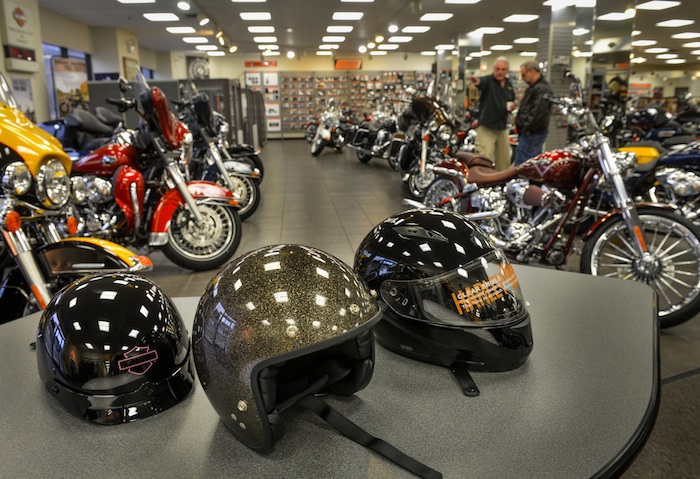Region’s motorcycle fatality rate up since helmet law repeal
The debate over whether Pennsylvania should require motorcyclists to wear helmets if they don’t want to was settled in 2003 with repeal of the state’s 35-year-old universal helmet law in favor of a weaker one that mostly applies to the youngest riders. The percentage of traffic deaths due to motorcycle accidents has risen across the state and in southwestern Pennsylvania ever since.
The motorcycle fatality rate in southwestern Pennsylvania is higher than the average among the 15 Pittsburgh Today benchmark regions, according to a University of Pittsburgh Graduate School of Public Health analysis of National Highway Traffic Safety Administration data.
Illinois, Iowa and New Hampshire are the only states without any kind of motorcycle helmet law on the books. But only 19 others enforce universal helmet laws that require all riders to wear protective headgear. The rest, including Pennsylvania, have conditional laws that are largely age-limited and affect only a fraction of the riders in the state.
Motorcycle fatalities have risen over the last 10 years throughout the United States, including in all Pittsburgh Today regions. The data suggest, however, the breadth of a helmet law can make a difference.
The only Pittsburgh Today benchmark regions with motorcycle fatality rates lower than the national average, for example, are Richmond, Boston, Charlotte and St. Louis. Every one of those regions enforces a statewide universal law that requires all riders to wear a helmet.
But the 11 other regions with rates higher than the national average – including the seven-county Pittsburgh Metropolitan Statistical Area – all have conditional laws, with the lone exception being Baltimore, which enforces Maryland’s universal helmet law. Pennsylvania’s law only requires motorcycle helmets for riders under the age of 21 and for older riders who’ve had a motorcycle license for less than two years or haven’t completed a motorcycle safety course.
In the Pittsburgh MSA, 16 percent of traffic deaths were due to motorcycle accidents from 2008 to 2010, according to the most recent federal traffic data available. That’s the ninth highest rate among the benchmark regions. It’s also significantly higher than the 10 percent motorcycle fatality rate reported in southwestern Pennsylvania before the repeal of the state’s universal helmet law, according to 2001-2003 data.
In the Philadelphia region, 18 percent of traffic deaths are from motorcycle accidents, according to the latest data. That region’s average motorcycle fatality rate was 10.6 percent during the two-year period prior to the repeal of the state’s universal helmet law.
Similar trends are seen beyond the benchmark regions. The U.S. Centers for Disease Control, for example, recently reported that in 2008-2010 an average of 79 percent of fatally injured motorcyclists were not wearing helmets in states with no motorcycle helmet laws and 64 percent of the bikers killed in states with conditional helmet laws weren’t wearing helmets. Only 12 percent of fatally injured motorcyclists weren’t wearing helmets in states where the law required them to do so.
Wearing helmets saves money as well as lives, and states with universal laws save the most, the CDC also reports. In 2010, states with universal laws saved an estimated $725 in medical costs and productivity losses per registered motorcycle – nearly four times the savings than in states that don’t require all riders to wear helmets.





